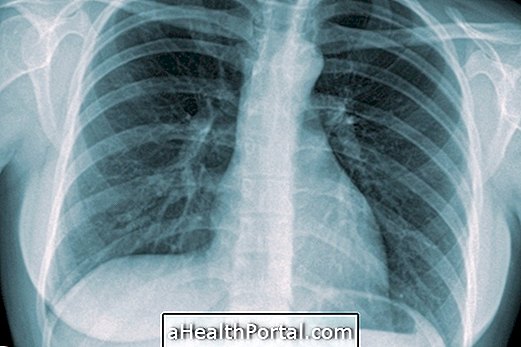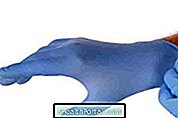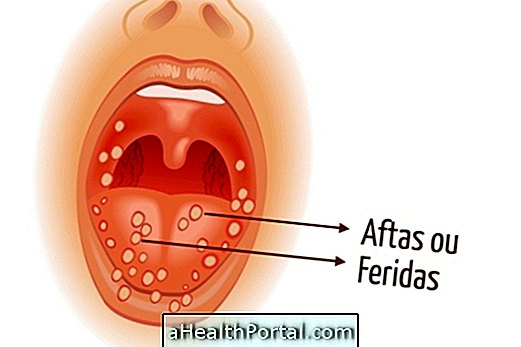Chronic sinusitis, which is inflammation of the facial sinus mucosa, is characterized by the persistence of sinus symptoms such as facial pain, headache and cough for at least 12 consecutive weeks. It is usually caused by resistant bacteria, previous use of excess antibiotics or by incorrect treatment of sinusitis, as well as by poorly controlled allergic rhinitis, changes in the airways, such as septal deviation, or weakened immunity.
Its treatment includes nasal lavage with saline solution and the use of drugs such as antibiotics, antiallergic or corticoids prescribed by the otorhinolaryngologist according to the cause of the inflammation. In some cases, surgery for drainage of accumulated mucus and / or for correction of nasal septum changes or removal of nodules may be recommended to allow cure of the disease.
It is very important that sinusitis is treated properly, as there is a risk of complications such as asthma attacks, pneumonia, meningitis, eye infection or even brain abscess.

How is the treatment done?
To treat chronic sinusitis, the otolaryngologist may indicate the use of medications such as:
- Antibiotics such as Amoxicillin / Clavulonate, Azithromycin or Levofloxacin, for example, are only used for bacterial infection. Usually, they are done for 3 to 4 weeks because, in chronic sinusitis, the infection is usually resistant;
- Mucolytics and decongestants, such as Ambroxol, to decrease the viscosity of secretions;
- Anti-inflammatories or corticosteroids, such as Nimesulide or Prednisone, help decrease inflammation and local swelling;
- Antiallergics, such as Loratadine, are most suitable for cases of sinusitis in people with allergies;
- Nasal corticosteroids, such as fluticasone and mometasone, help fight inflammation and allergy in the airways;
- Nasal wash with saline or water and salt preparations. Check out the recipe to prepare a homemade saline solution for sinusitis;
- Nebulization with water vapor or physiological saline to fluidize the secretions;
The use of nasal decongestants containing Nafazoline, Oximetazoline or Tetrahydrozoline, such as Sorine, for example, should be done with caution, for less than 3 weeks, as they cause rebound and dependence.
During treatment of chronic sinusitis, follow-up with the otorhinolaryngologist is recommended to investigate the cause of the inflammation. Thus, although the diagnosis of acute sinusitis is made through the clinical evaluation of the physician and does not require exams, in chronic sinusitis, examinations such as computed tomography of the face, nasal endoscopy and collection of nasal secretions samples may be necessary to identify the microorganism and cause of the problem.
Home Remedies Options
A great way to help eliminate nasal secretions as a complement to physician-directed treatment, in addition to nasal lavage with saline, is the inhalation of steam from plants such as eucaplipto or chamomile. Learn how to do these homemade treatments in the following video:

When surgery is indicated
The goal of the surgery is to enlarge or unclog the natural drainage channels of the sinuses, which may be closed and prevent drainage of the secretion, which accumulates and stimulates the proliferation of fungi and bacteria.
In addition, the procedure can also be combined with the correction of some defect in the anatomy of the person's nose, which may also be making it difficult to cure the infection, such as septum correction, adenoid removal or reduction of the size of the turbinates, which are the spongy tissues inside the nose.
Learn more about how it is done, risks and recovery from sinus surgery.
Symptoms of chronic sinusitis
Symptoms of chronic sinusitis last longer than 12 weeks, and may occur after 1 or several episodes of acute sinusitis, in which there is fever, body aches, and severe nasal discharge. In the chronic phase, the main symptoms are:
- Pain in the face or headache that gets worse when lowering the head or lying down;
- Persistent pain located on the cheekbones, around the nose and around the eyes;
- Discharge through the nose, yellowish or greenish;
- Bleeding from the nose;
- Sensation of pressure inside the head, obstruction of the nose and ear and dizziness;
- Chronic cough, which worsens at bedtime;
- Constant bad breath .
In addition, when sinusitis is allergic or occurs in people with allergy or rhinitis, there may be asthma attacks, itching of the nose and throat, and worsening of symptoms on contact with substances such as dust.

Possible Complications
Chronic sinusitis, when not properly treated and controlled, can worsen over time and cause accumulation of secretion, forming an abscess, and inflammation and infection can reach organs near the nasal cavities, such as eyes, brains.
The infection can also trigger asthma attacks, especially in children, and pneumonia or even reach the bloodstream and cause a widespread infection.
Main causes
Conical sinusitis is more common in people who:
- They have incorrectly treated other acute sinusitis;
- They have used antibiotics wrongly or unnecessarily, repeatedly;
- Have severe or poorly controlled asthma or allergic rhinitis ;
- Have gastroesophageal reflux ;
- They exhibit weakened immunity, such as HIV carriers, chronic steroids or uncontrolled diabetics;
- Have had a hospital stay or have undergone recent surgeries;
- They suffered a blow to the face;
- They have changes in the airways, such as deviated septum, nasal polyps or hypertrophy of the nasal turbinates.
Thus, in order to avoid chronic sinusitis or to treat it properly, it is very important to resolve these situations.

























